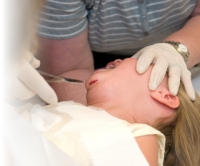Pain in Children is Different course



This session describes the incidence, causes and effects of pain in infants, children and young people and the basic physiological mechanisms operating in both acute and chronic pain.
Learning Objectives
By the end of this session you will be able to:
- List the incidence, causes and effects of acute pain in children
- List the incidence, clinical presentations and effects of chronic pain in children
- Describe basic nociceptive mechanisms and the influence of child development
- List the differences between inflammatory and neuropathic pain
- Describe the physiological basis for chronically maintained pain
Children's pain is often poorly managed, both in hospital settings and in the community, leading to unnecessary suffering and short-term and long-term complications.
Suellen held paediatric anaesthesia consultant posts in Australia, obtained a Masters in Pain Medicine and was a Foundation Diplomate of the Faculty of Pain Medicine, Australian and New Zealand College of Anaesthetists in 1999. She subsequently completed an MSc and PhD in developmental neurobiology of pain in London.
Her current research interests include developmental analgesic efficacy and safety and long-term effects of pain in early life.
Suellen has contributed to evidence-based acute pain guidelines, is an Editor of the Oxford Textbook of Paediatric Pain, and is a content author on the e-PAIN project.


Richard is involved in clinical pain management, clinical and laboratory research, and has lectured and published extensively on the subject of pain mechanisms and management.
He is the Clinical Lead of the children’s Pain Management Service at Great Ormond Street. He is a founder member of the UCL Paediatric Pain Research Centre; a collaboration between clinicians and scientists, an Examiner for the UK Fellowship of the Faculty of Pain Medicine and Chair of the Medicines for Children Research Network (MCRN) Pain & Palliative Care Clinical Studies Group.
Richard is a module editor and content author of sessions of the e-PAIN project.

- Anaesthesia | Obstetrics | Regional Analgesia 2: T...
- Posted By eIntegrity Healthcare e-Learning
- Posted Date: 2024-12-28
- Location:Online
- This session explains how to prepare for a regional analgesia for labour, how to insert an epidural catheter and how to establish and maintain labour analgesia.
- NiPHC Transition to Practice Program
- Posted By APNA - Australian Primary Healthcare Nursing Association - Transition to Practice Program
- Posted Date: 2024-12-28
- Location:Online
- Transition to Practice Program: helping nurses make the move into primary health care.
- Anaesthesia | Obstetrics | Body Composition and Gr...
- Posted By eIntegrity Healthcare e-Learning
- Posted Date: 2024-12-28
- Location:Online
- The session starts with an introduction to the concept of growth and development, and why this is important for paediatric anaesthesia pharmacology. This includes an important outline of what is ‘normal’. A key point of this session is for th
- Anaesthesia | Obstetrics | Anaesthesia in Early Pr...
- Posted By eIntegrity Healthcare e-Learning
- Posted Date: 2024-12-28
- Location:Online
- This session will describe the common risks to both mother and fetus that require surgery in early pregnancy. It will support the recognition of the potential pitfalls of anaesthetizing women in early pregnancy to ensure the safety of both the mother and
- Anaesthesia | Obstetrics | Breastfeeding and Anaes...
- Posted By eIntegrity Healthcare e-Learning
- Posted Date: 2024-12-28
- Location:Online
- This sessionprovides information for an anaesthetist to give to mothers about the benefits of breastfeeding, and the safety of drugs commonly prescribed in the perioperative period.







